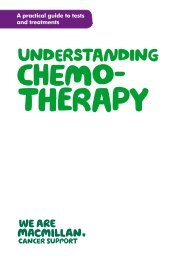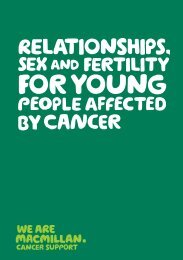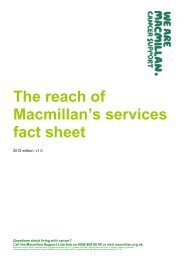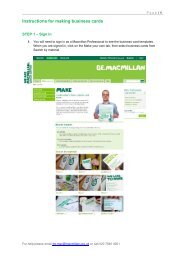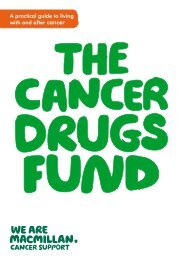Download PDF here - Macmillan Cancer Support
Download PDF here - Macmillan Cancer Support
Download PDF here - Macmillan Cancer Support
Create successful ePaper yourself
Turn your PDF publications into a flip-book with our unique Google optimized e-Paper software.
Get Active, Feel Good<br />
How much to do<br />
During treatment, you may not feel up to being very active,<br />
but this will depend on your individual situation and any<br />
treatment side effects. Doing what’s comfortable for you,<br />
even if that’s just going for some short walks or avoiding<br />
being immobile for long periods, can help you feel better.<br />
After treatment, you can try to build up your activity<br />
gradually, working towards the recommended levels if<br />
possible. If you’ve been inactive for a while, it’s important<br />
to start slowly and gradually build up your activity levels.<br />
Set realistic and achievable goals that work for you.<br />
If you’re unsure about undertaking a particular activity<br />
or exercise, contact your doctor, nurse, physiotherapist<br />
or qualified cancer exercise specialist.<br />
Recommended levels of physical activity<br />
In the UK, adults are advised to do at least 2.5 hours of<br />
moderate-intensity physical activity per week. This could<br />
be 30 minutes of activity on five days of the week, which<br />
could be broken up into 10 minutes of activity three times<br />
a day. It’s also advisable to do some muscle-strengthening<br />
exercises at least twice a week. Older adults at risk of falls<br />
should undertake activity to improve coordination and<br />
balance on at least two days per week.<br />
Our booklet Physical activity and cancer treatment<br />
and our Move more pack have more information.<br />
6



